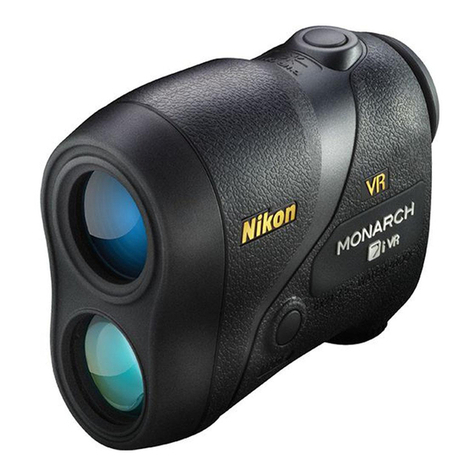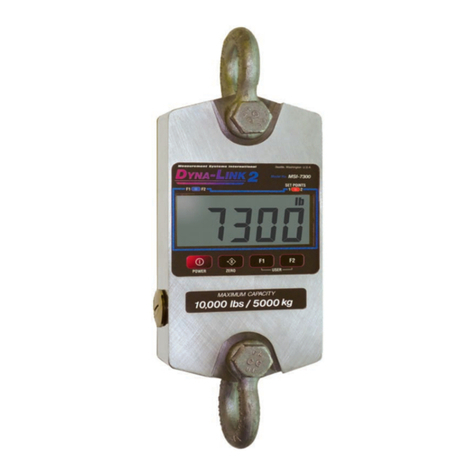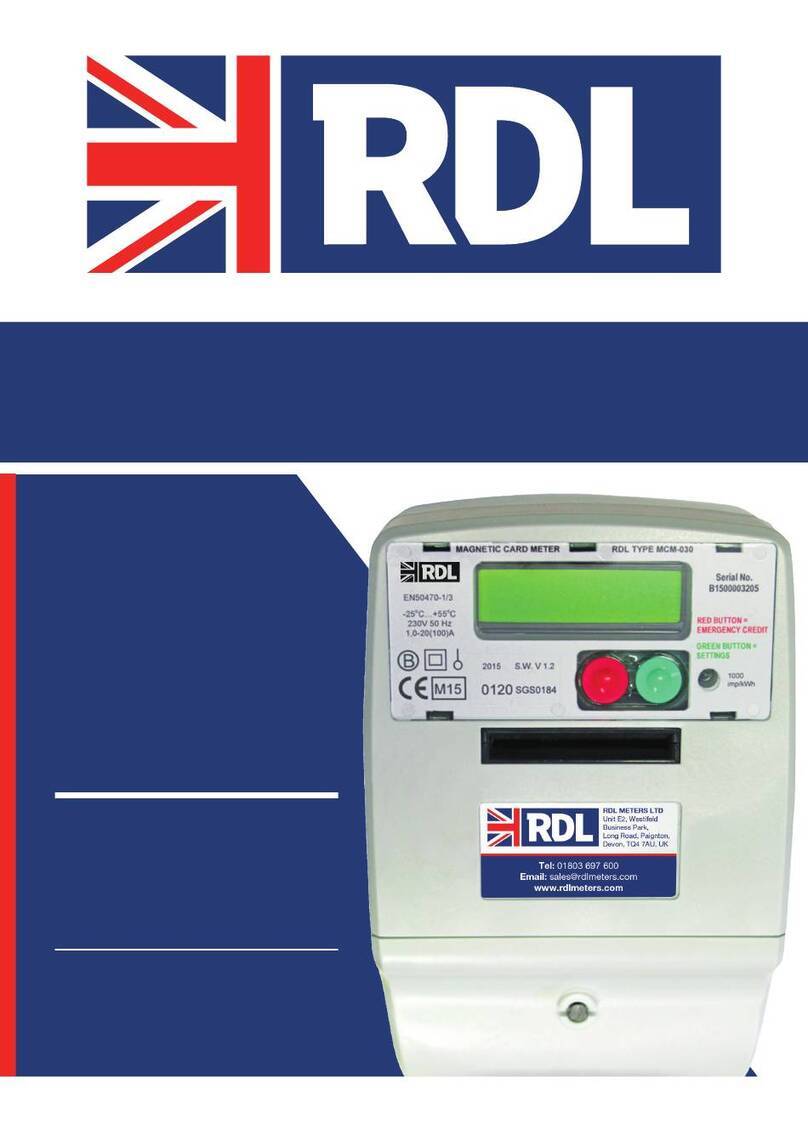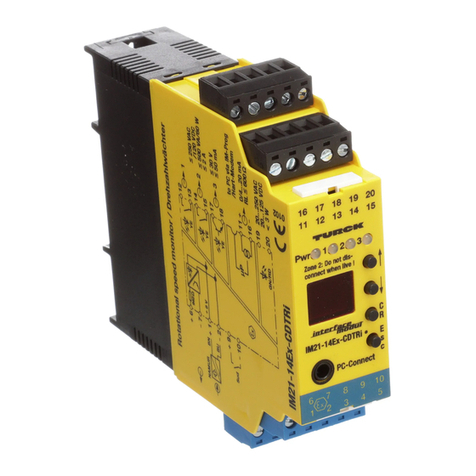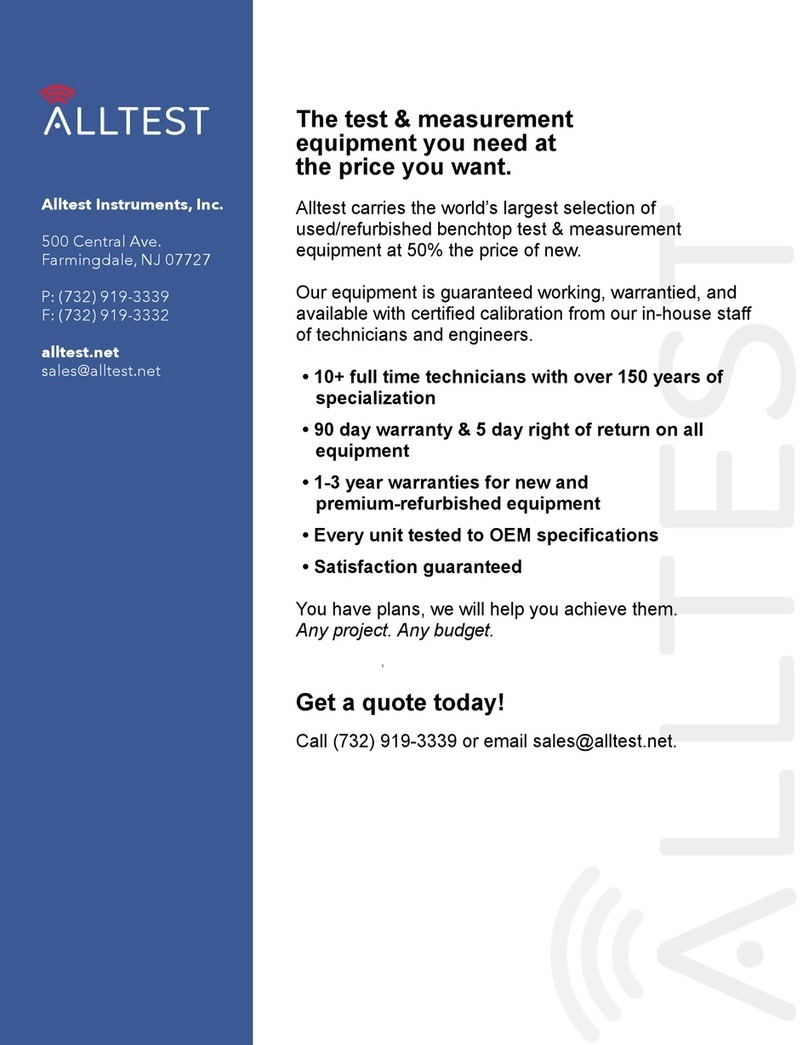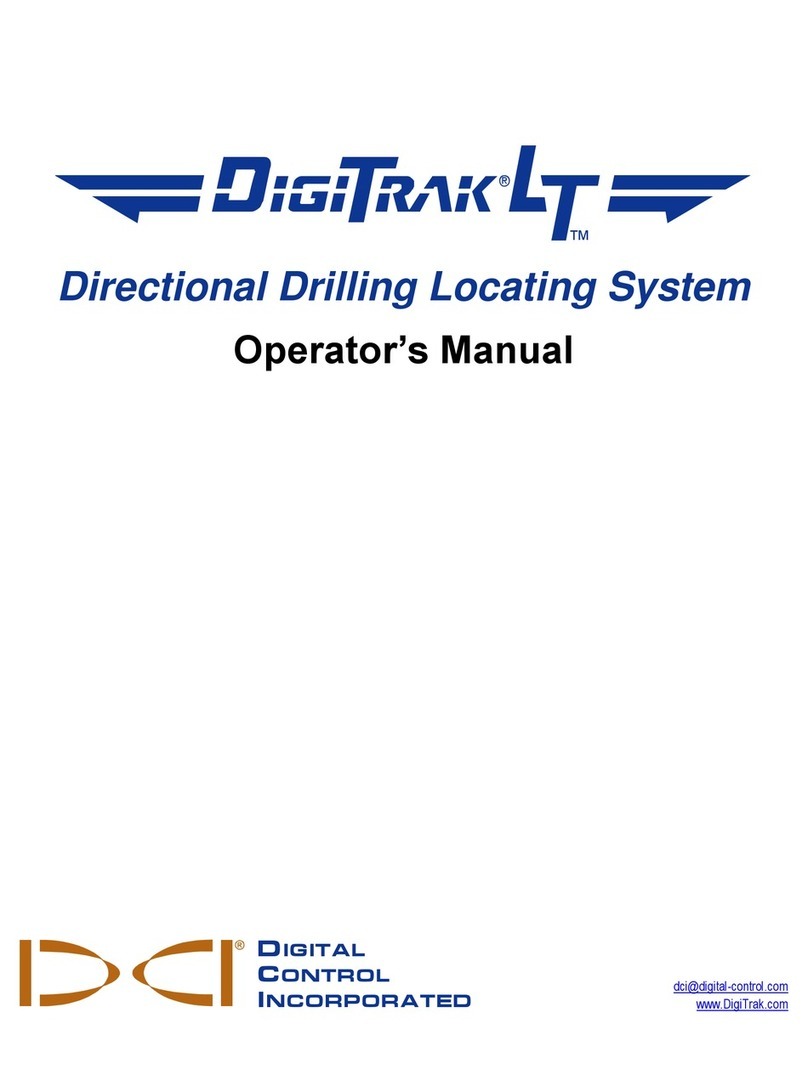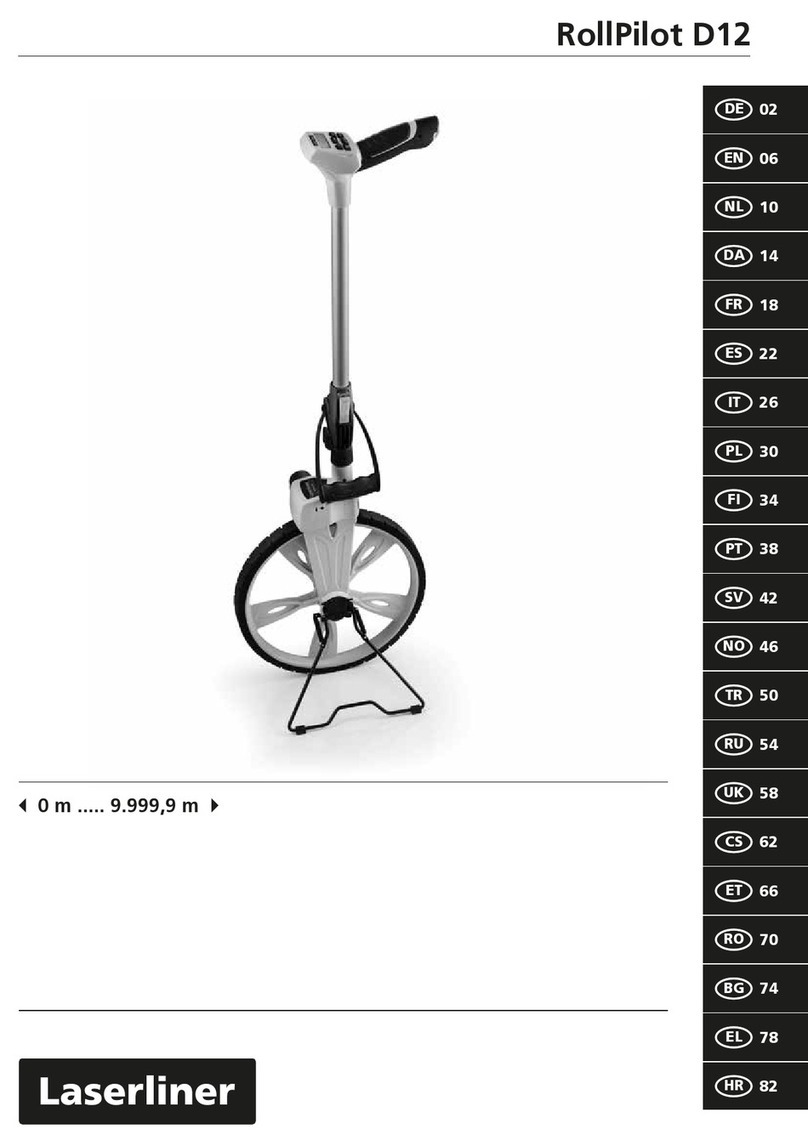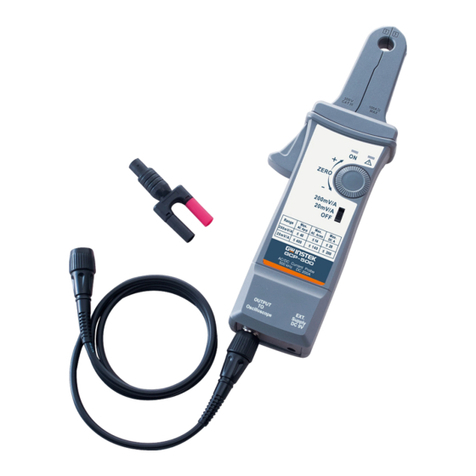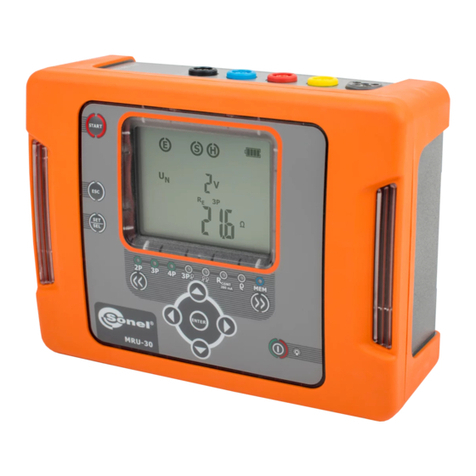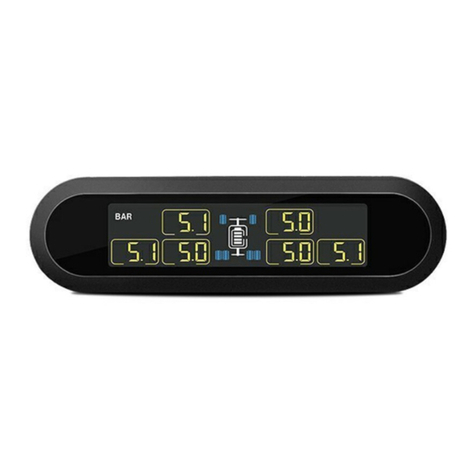MYIRO MYIRO-1 User manual

Spectrophotometer
En Instruction Manual
Please read before using the
instrument.
Scan the 2D code to access the most
recent instruction manual.

Safety Symbols
The following symbols are used in this manual to prevent accidents that
may occur because of incorrect use of the instrument.
Denotes an instruction regarding a safety warning or note.
Read the instruction carefully to ensure safe and correct
use.
Denotes a prohibited operation.
This operation must never be performed.
Denotes an instruction.
This instruction must be strictly adhered to.
Denotes a prohibited operation.
Never disassemble the instrument.
Denotes an instruction.
To turn the power OFF, unplug the USB cable from the
connected device.
Denotes a warning about the LED.
Read the instruction carefully to ensure safe and correct
use.

Notes on this Manual
• Copying or reproduction of all or part of the contents of this manual
without the permission of THE MANUFACTURER OF THIS PRODUCT is
strictly prohibited.
• The contents of this manual are subject to change without prior notice.
• Every eort has been made in the preparation of this manual to ensure
the accuracy of its contents. However, should you have any questions or
find any errors, please contact your retailer.
• THE MANUFACTURER OF THIS PRODUCT will not accept any
responsibility for consequences arising from the use of the instrument.

1
Safety Precautions
To ensure correct use of this instrument, read the following points carefully and
adhere to them. After you have read this manual, keep it in a safe place where it
can be referred to anytime a question arises.
WARNING (Failure to adhere to the following points may result in death or serious injury.)
Do not use the instrument in places where flammable or combustible
gases (gasoline, etc.) are present. Doing so may cause a fire.
Do not disassemble or modify the instrument.
Doing so may cause a fire or electric shock.
Do not allow liquid or metal objects to enter the instrument. Doing so
may cause a fire. Should liquid or metal objects enter the instrument,
turn the power OFF immediately, disconnect the USB cable and
contact your retailer.
Do not forcibly bend, twist, or pull the USB cable. Also, do not scratch,
fabricate, or place heavy objects on the USB cable. Doing so may
damage the USB cable and cause a fire or electric shock.
The instrument should not be operated if it is damaged, or if smoke or
odd smells occur. Doing so may cause a fire. If smoke, odd smells, or
damage occurs, turn the power OFF immediately, disconnect the USB
cable from the connected device, and contact your retailer.
Always hold the USB cable plug itself when disconnecting the USB
cable. Pulling on the cable may damage it and cause a fire or electric
shock.
Do not insert or disconnect the USB cable with wet hands. Doing so
may cause electric shock.

2
WARNING (Failure to adhere to the following points may result in death or serious injury.)
If the instrument will not be used for a long time, disconnect the USB
cable. Accumulated dirt or water on the USB cable connector may
cause a fire. Clean o any dirt or water on the USB cable connector
before use.
Firmly push the USB cable completely into the socket. Incomplete
insertion may cause a fire or electric shock.
If the instrument is found to be leaking or emitting an unusual odor,
keep the instrument away from any open flames. The electrolytic
solution from the battery may catch fire, causing rupture or fire.
Do not place lenses, reflective objects, or optical elements in the path
of the UV-LED. Doing so may cause the light from the LED to become
concentrated, which may cause injury to the eyes or burning. In
addition, the back of the object should be blocked by a wall or other
object capable of blocking the LED, thus preventing the above from
happening inadvertently.
Do not look directly into the LED light (including the beam, marker,
and projection window). Doing so may injure the eyes.
Be sure to turn the instrument OFF in areas where use is prohibited,
such as in airplanes or hospitals. Using the instrument in such areas
may aect the electronics and medical equipment, which may cause
an accident.

3
CAUTION (Failure to adhere to the following points may result in injury or damage to the
instrument or other property.)
Take care not to pinch yourself on the areas of the instrument that
open and close. Doing so may result in injury.
Do not use the instrument if the limiting aperture (measuring port) is
in the line of sight. Doing so may result in injury to the eye.

4
Table of Contents
Safety Symbols ................................................................................................ i
Notes on this Manual .................................................................................. ii
Safety Precautions.......................................................................................... 1
Introduction ................................................................................................... 5
Notes on Use .................................................................................................. 5
Standard Accessories.................................................................................... 10
Optional Accessories .................................................................................... 11
System Diagram ........................................................................................... 12
Names and Functions of Parts ....................................................................... 13
Charging ...................................................................................................... 15
Connecting to a Computer............................................................................ 16
Turning the Power ON/OFF .......................................................................... 17
Calibration ................................................................................................... 18
Calibration Method....................................................................................... 19
Measurement ............................................................................................... 20
Scan Measurement................................................................................... 20
Spot Measurement ................................................................................... 22
Display Measurement (Brightness Measurement)..................................... 23
Ambient Light Measurement .................................................................... 23
Cleaning the Protection Glass ....................................................................... 24
Storage Method............................................................................................ 26
Troubleshooting ........................................................................................... 27
Specifications............................................................................................... 29
Dimensions .................................................................................................. 32

5
The MYIRO-1 is a compact, lightweight hand-held spectrophotometer
designed for measuring color and density in the printing and digital imaging
industries with just one device.
Packing materials of the product
Be sure to keep all packing materials used for shipping the product
(cardboard box, cushioning material, plastic bags, etc.). This instrument is a
precision measuring instrument. When transporting the instrument to a
service facility for maintenance or for other reasons, be sure to use the
packing materials to minimize shock or vibration. If the packing materials
are lost or damaged, contact your retailer.
Notes on Use
Operating Environment
• Use the instrument at an ambient temperature of between 10°C and 35°C
and a relative humidity of between 30% and 85% with no condensation.
• Be sure to use the instrument within this range. Do not use it in areas of rapid
temperature changes.
• Do not leave the instrument in direct sunlight or near heat sources such as a
stove. Doing so may cause the internal temperature of the instrument to
become much higher than the ambient temperature.
• Do not use the instrument in areas where dust, cigarette smoke, or chemical
gases are present. Doing so may cause deterioration in performance or a
malfunction.
• Do not use the instrument near equipment that produces a strong magnetic
field (such as speakers).
• The instrument is a pollution level 2 product (equipment that may cause
temporary electrical hazards due to contamination or condensation or
products that are used in such an environment).
• Do not use the instrument at altitudes higher than 2,000 m.
• This instrument has been designed exclusively for indoor use. It should
never be used outdoors because rain or other factors may damage the
instrument.
Introduction

6
Measurement
• Make sure no dust gets into the instrument ports.
• When not using the instrument for a long period of time, remove the limiting
aperture, and blow o dirt or dust on the protection glass with a blower
before use.
• Over extended periods of use, changes in the surrounding environment may
result in the measured values shifting. Performing calibration periodically is
recommended to ensure measurements are accurate.
White Calibration Plate
• Make sure the white calibration plate being used includes the same serial
number as that of the instrument being used.
• The calibration data for the white calibration plate was measured at 23°C.
• To achieve the highest accuracy when measuring absolute values
(colorimetric values), calibration and measurement should be performed at
23°C.
• Do not allow the white calibration plate to become scratched or dirty.
• When the calibration cap is not in use, keep the white calibration plate away
from external light and dust.
Ruler
• The sliding surface has a special coating that facilitates sliding. If there is
dust or dirt on the ruler, use a blower to blow it o or gently wipe it with a
soft, clean dry cloth. Never use solvents such as thinner or naphtha.

7
Ambient Light Adapter
• Make sure the ambient light adapter being used includes the same pairing
number as that of the instrument being used.
• Do not allow the ambient light adapter to become scratched or dirty.
• Keep the ambient light adapter away from external light and dust when not
in use.
Power Source
• When the instrument is not being used, turn the power switch OFF.
• To charge the instrument, connect it to a computer using the USB cable.
System
• Do not subject the instrument to strong vibrations or impacts. Doing so may
cause deterioration in performance or a malfunction.
• The limiting aperture (measuring port) of this instrument is a particularly
precise component of the optical system. Do not allow the aperture to
become dirty or subject the aperture to impacts. When the instrument is not
in use, make sure to attach the calibration cap to protect the limiting
aperture (measuring port).
• The instrument may cause interference if used near a television, radio,
transceivers, etc.
• Communication with connected external devices may be interrupted if the
instrument is exposed to strong external static electricity. In such cases, turn
the power OFF and then ON again.
• When turning the power OFF and then ON again, wait several seconds after
turning the power OFF before turning the power back ON.

8
Internal Lithium-Ion Battery
• The battery is not charged upon purchase and must therefore be charged.
• The battery will be charged from power supplied through the USB cable
regardless of whether the instrument is turned ON or OFF.
• Charging should be performed at between 5°C and 40°C.
• The internal lithium-ion battery takes about 3 hours to become fully charged.
There is no need to worry about overcharging.
• The lithium-ion battery will self-discharge. The battery will become unusable
due to over discharging if left for a long period. Charge the battery at least
once every 6 months.
Notes on Storage
• The instrument should be stored at a temperature of between 0°C and 45°C
and a relative humidity of between 0% and 85% with no condensation.
Do not store the instrument in areas subject to high temperatures, high
humidity, or sudden changes in temperature, or in areas where freezing or
condensation may occur, as these circumstances may cause a malfunction.
We recommended storing the instrument with a drying agent at a
temperature of around 20°C.
• Do not leave the instrument inside a vehicle, such as in the cabin or the
trunk. Otherwise, the temperature and/or humidity may exceed the
allowable range for storage during midsummer or midwinter, resulting in a
malfunction.
• Do not store the instrument in areas where dust, cigarette smoke, or
chemical gases are present. Doing so may cause deterioration in
performance or a malfunction.
• Dust inside the limiting aperture (measuring port) may prevent accurate
measurements from being performed. When the instrument is not in use,
attach the calibration cap, and store the instrument in the standard
accessory soft case.
• The white calibration plate and ambient light adapter may become
discolored if left exposed to light. Therefore, make sure to store the
components in a location away from direct exposure to light when not in use.
• If the instrument will not be used for a long period of time, an auxiliary
charge is recommended once a year to protect the battery from
overdischarge.

9
Notes on Transporting
• When transporting the instrument, be sure to use the packing materials to
minimize shock or vibration.
• When sending the instrument to your retailer, package and send the
instrument and all accessories.
Maintenance and Inspection
• To maintain measurement accuracy, the instrument should be inspected
once a year. For information on inspection, contact your retailer.
Notes on Cleaning
• When the instrument is dirty, wipe it with a soft, clean dry cloth. Never use
solvents such as thinner or naphtha.
• If the white calibration plate becomes dirty, wipe it with a soft, clean dry
cloth. If the dirt is dicult to remove, wipe it o with a cloth dampened with
commercially available lens cleaning solution, remove the solution with a
cloth dampened with water, and allow the plate to dry before using.
• Should the instrument break down, do not try to disassemble or repair it by
yourself. Contact your retailer.
Disposal Method
• Make sure that the instrument, its accessories, and the packing materials are
either disposed of or recycled correctly in accordance with local laws and
regulations.

10
Standard Accessories
Calibration Cap MY-A01
Used to perform white calibration and zero
calibration.
The calibration cap can be stored on the main
body during measurement.
Ruler MY-A02
Used to perform spot measurement or scan
measurement.
USB Cable IF-A41
Used to connect the instrument to a
computer.
Soft Case MY-A03
Used to store the instrument together with
the included accessories.
Spectrophotometer ConfigurationTool
MY-CT1
Used to configure network settings and write
calibration values to the instrument. Visit the
following website to download the tool.
https://www.myiro.com/downloads

11
Optional Accessories
Ambient Light Adapter MY-A04
Used to perform ambient light measurement.

12
System Diagram
Standard Accessories
Main body
MY-1
Tripod for display
measurement
(commercially
available)
Computer
(commercially
available)
Optional Accessories
USB cable
IF-A41
Spectrophotometer Configuration Tool
MY-CT1
*Available for download on the Web
Ruler
MY-A02
Soft case
MY-A03
Calibration cap
MY-A01
Ambient light adapter
MY-A04

13
Names and Functions of Parts
(1) Power button Turns the instrument power ON or OFF. The instrument
switches between ON/OFF every time the power button is
pressed.
(2) Measurement button Used to perform measurement.
(3) Status indicator Displays the instrument status. The indicator flashes a
dierent color according to the status, such as “Measurement
possible”, “Scan successful/failure”, and “Error”.
(4) Wireless LAN
indicator
Displays colors and illumination patterns (lit/flashing) to
show the wireless LAN connection status.
(5) Battery indicator Displays the remaining battery power and charging status
through flashing or being lit.
(6) USB connection
terminal
Used to connect the instrument to a computer via the USB
cable. In addition to enabling communication with a
computer, the terminal is also used for charging.
(7) Calibration cap Attached to the limiting aperture during calibration and for
storage.
(8) White calibration plate Used to calibrate the instrument.
(9) Limiting aperture
(measuring port)
This is the aperture for measuring samples.
The aperture can be removed when cleaning the protection glass.
(10) Tripod mount screw Used for securing the instrument to a commercially available
tripod. Tripod mounting is used for measuring displays.
(2) (6) (3) (1)
(7)
(10)
(5)(8)(9) (4)

14
The status indicator colors and their relevant statuses are as follows.
Indicator Status Meaning
Not lit Power OFF
The instrument power is not turned ON.
Lit orange Power ON No software is connected.
Lit yellow Calibration not
performed Calibration has not been performed.
Lit blue Measurement
possible Measurement can be performed.
Lit white Measuring Measurement is in progress.
Lit green (1 s) Measurement
successful
Measurement was performed
correctly.
Flashing red (1 s) Measurement failed Measurement was not performed
correctly.
Flashing light
blue Calibrating Calibration is currently being
performed.
Lit green (1 s) Calibration
successful
Calibration was performed
correctly.
Flashing red (1 s) Calibration failed Calibration was not performed
correctly.
The wireless LAN indicator colors and their relevant statuses are as follows.
Indicator Status Meaning
Not lit Not connected
Connection to the access point has
not been established.
Alternatively, a USB connection has
been established.
Flashing orange
Attempting to connect
to access point
Connection to the access point is
currently being established.
Flashing red (1 s) Access point
connection failed
Connection to the access point
could not be established.
Lit orange
Access point
connection
successful
Connection to the access point has
been established.
Lit blue Connection via
wireless LAN
Connection via wireless LAN has
been established.

15
Charging
This instrument is powered by an internal lithium-ion battery. To charge the
internal lithium-ion battery, connect the instrument to a computer via the USB
cable.
Operating Procedure
1
Connect the connector of the
USB cable to the USB connection
terminal on the instrument. USB cable
USB connection
terminal
Computer
(commercially
available)
2
Connect the other connector of
the USB cable to the USB
terminal on the computer.
The battery indicator displays the remaining
power and charge status of the internal lithium-
ion battery. Battery indicator
Indicator Status Meaning
Not lit
Remaining
battery
power
available
The internal lithium-ion battery has sucient power
to operate the instrument.
Flashing orange Low battery The remaining battery power is low. Please charge.
Lit orange Charging The instrument is currently being charged.

16
Connecting to a Computer
This instrument is equipped with a USB connection terminal and a wireless LAN
connection function.
Operating Procedure
1
Connect the instrument to the computer.
Connecting via USB
Connect the included USB cable to the USB connection terminals on the
instrument and on the computer.
Computer (commercially available)
USB cable
Instrument
USB connection terminal
Connecting via wireless LAN
Configure the network settings on the instrument using the Spectrophotometer Configuration Tool.
The Spectrophotometer Configuration Tool can be downloaded from the following website.
https://www.myiro.com/downloads
Computer (commercially available)
Spectrophotometer
Configuration Tool
*Available for
download on the Web
Router
(commercially
available)
Instrument
Memo For how to configure the network settings for the instrument, refer to
Spectrophotometer Configuration Tool instruction manual.
Memo This instrument is compatible with WPA2-PSK (WPA2-Personal).
2
Turn the instrument power ON (see page 17).
CAUTION It is best to turn ON the instrument before starting any software.

17
Turning the Power ON/OFF
Operating Procedure
1
Press the power button.
The status indicator will be lit, and
the power will turn ON.
Power button
Status indicator
Lit (orange)
2
Press the power button again.
The status indicator will turn OFF,
and the power will turn OFF.
Power button
Status indicator
O
Auto Power O function (Initial setting: 15 minutes)
This instrument is equipped with an Auto Power O function that
automatically turns the power OFF if the device is not operated after a
specified time. To turn the power back ON, press the power button.
When this occurs, the calibration data will be erased, so recalibration will be
necessary. The Auto Power O function is disabled when the instrument is
connected to a computer via a USB cable.
You can change the time using the Spectrophotometer Configuration Tool.
The Spectrophotometer Configuration Tool can be downloaded from the
following website.
https://www.myiro.com/downloads
Table of contents
